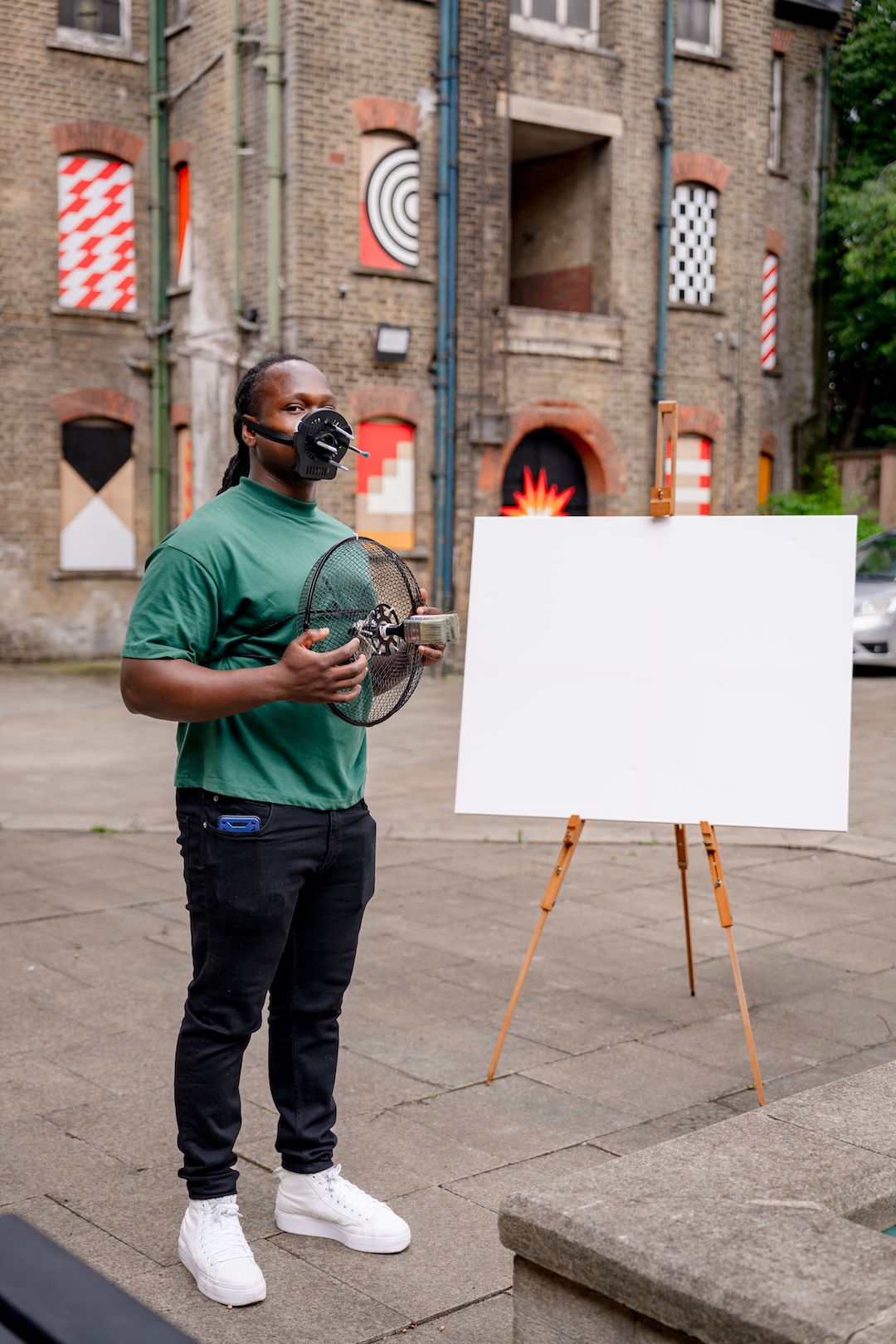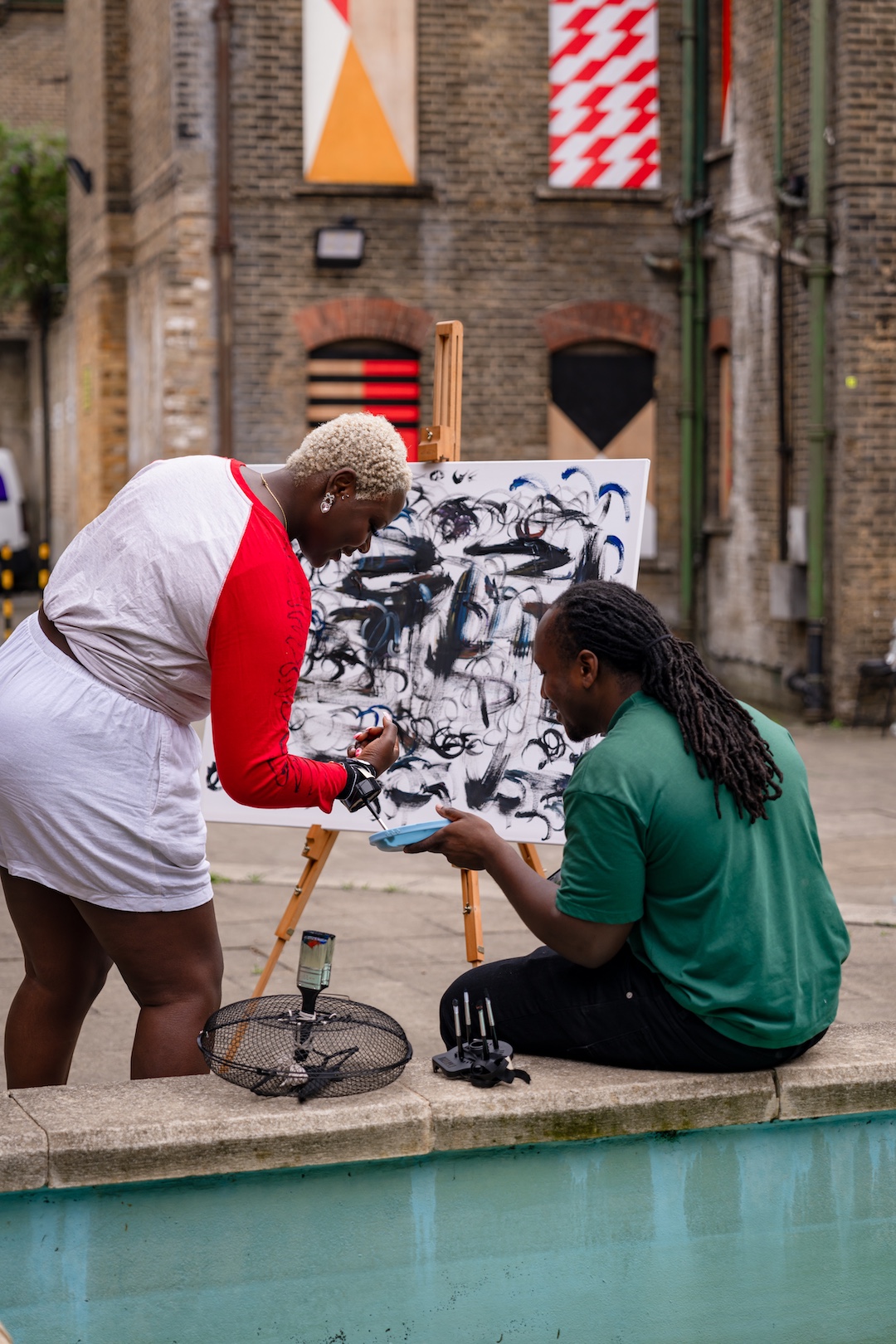“It showed art can open up new ways of learning and connecting with the past. Watching people create their own visual interpretations of Alice Billing House made me realise that they’ll remember the story of Alice Billing.”
Since the launch of Alice Billing House in Stratford, we've been curious about who Alice Billing was, and the quiet but significant mark she left on Newham. At the Inspector of Nuisances launch, guests were greeted by a large canvas that embodied layers of colour and texture, with brushstrokes that both concealed and revealed, evoking a sense of curiosity around how the feel of constant movement was achieved. Piarvé Wetshi from Creative Land Trust took a moment to speak with Sam Ikhuoria, the artist in Residence for the Inspector of Nuisances project, and founder of The SHAPES UK, who describes his work as expressive abstracts that explores events, emotion and connection to places.
Inspector of Nuisances is a heritage and creative research project led by Grow Studios, inspired by Alice Billing, Newham's first female sanitation inspector, who served between 1897 and 1930. The project takes its name from the official Victorian-era title for public health officers; a role Alice held at a time when few women held such civic positions.
Piarvé Wetshi (PW): Sam, when did you realise that you wanted to become an artist?
Sam Ikhuoria (SI): It first clicked when I noticed my art teachers responding to the conceptual side of my work, something I didn't fully grasp at the time. Their encouragement made me realise that what I create could communicate deeper meaning, and that art could be more than just visual.
PW: How did you approach the initial Inspector of Nuisance's brief; what inspired the concept?
SI: When I first approached the brief, I imagined a straightforward painting. But as with most of my projects, the idea evolved over time. I revisited past thoughts I hadn't explored closely and ways of working that aren't entirely tied to me using my hand to paint. As I stared at a broken fan in my room, I began ideating and experimenting with its parts, deconstructing and reconstructing them into wearable tools that could help me paint through movement. This thought process brought the fan into a different use.
PW: I did notice that you used your body and wearable tools to produce the art piece – why is this method of self-expression important to your craft? When did you first come across it?
SI: This approach was inspired by the German artist Rebecca Horn, whom I first learned about 14 years ago in school. She used wearable sculptures and body modification to showcase her work. For this project, I wanted to give my body the lead, allowing movement and music to guide the painting process. I became curious about what it would mean to create art without relying solely on my hands. If I couldn't use them, could I still paint? This residency gave me the opportunity to explore that thought.
PW: Part of the residency also involved inviting residents to explore this history through the Collage and Conversations workshops. I loved seeing their interpretation of the brief alongside your work. What did you take away from watching people merge history, art and storytelling?
SI: History might not be everyone's forte, but seeing how participants digested it through art was refreshing. It showed art can open up new ways of learning and connecting with the past. Watching people create their own visual interpretations of Alice Billing House made me realise that they'll remember the story of Alice Billing and the building where the workshop was held.
PW: What is the most interesting and relatable thing you learned about Alice Billing House, or Alice Billing herself during your residency?
SI: Alice Billing remains a mysterious figure. There's surprisingly little information about her, yet she holds an important place in Newham's history as the first female Sanitation Inspector. I found that mystery fascinating. In a way, I could relate to her; as an artist, it made me wonder about how our work might one day be remembered, or even rediscovered, and what kind of legacy and impact we each leave behind.
PW: I'm so glad that we are unlocking her legacy. And Finally, we like to ask artists about their studio story, where do you produce your art? And what impact has the space had on your work throughout the course of your career?
SI: Most of my artworks have been created at home. In the past, I've turned conservatories into studio spaces. Over time, I've come to appreciate how personal spaces shape my work. They hold memories and familiarity that feed into the creative process.
Follow Sam's work on Instagram and The Shapes UK, and learn more about the Inspector of Nuisances project here.
In 2023, Grow Studios partnered with the Creative Land Trust (CLT) to transform Alice Billiing House into a new hub of artist studios and to deliver a new heritage-led cultural and community engagement programme – Creative Futures.
Alice Billing House is a collaboration between CLT and Grow Studios.
Photography by Monika Szolle






